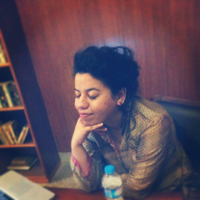More about Wigs (portfolio)

Contributor
Lorna Simpson's Wigs would be so helpful at my local barber’s when I just can’t figure out what to do with my hair.
Hair is important. That’s why there’s a musical named after it. That’s what Lorna Simpson’s getting at too, though not the musical version. No, her concerns are a bit more serious as she disconnects this part of the body a bit humorously and gets us mulling over it. These wigs, printed on felt; get us thinking about the face, the identity, the gender and even the race of the person they belong to. Most of us think we might have this figured out simply from looking at these disconnected/awesome wigs, and this just proves Simpson’s point: Hair is often a marker of cultural identity and we assign types of hair to certain types of people.
Simpson mixes up them hurrdo’s with bits of text here and there, which reads stuff like, “The wig produced the desired effect.” This is kind of true…they DO produce the desired effect not just on the wearer, but also us, the viewers. We are quick to associate them with the categories of people that might wear them, i.e. mostly women of color. Although, that blonde wig looks like it has some serious gender-defying powers. But if you look carefully, there’s also a print of a mustache and one of some pubes thrown in for good measure. So the piece isn’t entirely about women...since the upper-lip wig is something we normally associate with men. But who says a girl can’t rock a mustache?? Pretty sure that Frida Kahlo and numerous South Asian women who shun western ideals of beauty and personal grooming i.e. me, have answered that for generations to come! Wear your hair loud and proud, girls…and boys.











